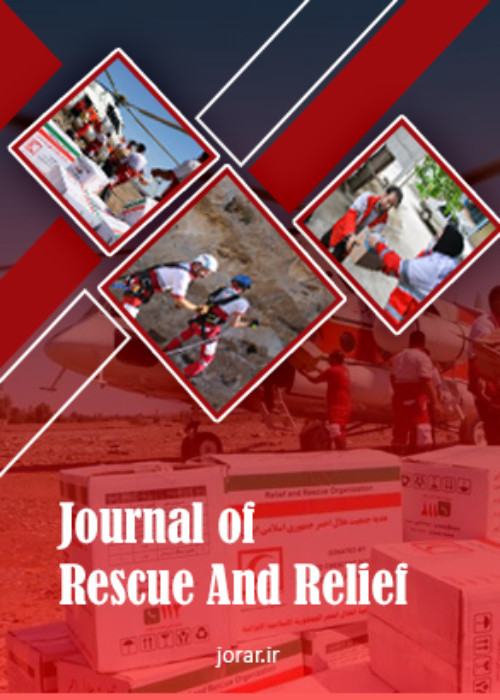Analysis of the Vulnerability of Pilgrims in Imam Reza's Shrine during the Emergency Evacuation Due to the Crisis using Fuzzy Logic and Interpolation Method
The need to carry out the emergency evacuation of people from disaster-affected areas and their transfer to safe areas, in the shortest possible time and with the least number of injured, has made the issue of urban emergency evacuation a complex one in the real world. The complexity of the spatial layout of the courtyards and the presence of a large population within the Shrine, among which vulnerable groups also have a significant share, increase the probability of the population's vulnerability to natural and human disasters. Based on this, the current research was conducted to investigate the vulnerability of the pilgrims of Imam Reza's Shrine during the emergency evacuation caused by the crisis and what measures could reduce the vulnerability.
The present applied study was conducted based on a descriptive-analytical method. The required data were collected through documentary-library and field studies methods. The gathered data were analyzed using the Analytic Hierarchy Process model, fuzzy logic, and the Inverse Distance Weighting interpolation method in Arc GIS and Expert Choice software.
The findings of this study indicated that based on the presented integrated model, which included 7 variables of the length of the route, the number of nodes along the route, the number of nodes in the surrounding space of the settlement, fixed and passing population density, the ratio of the population to the width of the exit door, and distance from buildings, the highest level of a possible vulnerability in the Shrine was related to Rozeh Monavvareh, Goharshad Courtyard, Sheikh Bahaie Sanctuary, the western part of the Great Prophet Courtyard, and Bab-Al-Javad in descending order. The north and northeast parts of the Shrine had a low level of vulnerability for people's exit.
The results of this research showed that the presented model could be used as a suitable model in other religious places. In addition, some measures can be adopted to reduce the vulnerability of pilgrims, including increasing the number and width of the doors, removing obstacles in the place of the doors, and paying attention to the type of activities assigned to different parts of the Shrine.
- حق عضویت دریافتی صرف حمایت از نشریات عضو و نگهداری، تکمیل و توسعه مگیران میشود.
- پرداخت حق اشتراک و دانلود مقالات اجازه بازنشر آن در سایر رسانههای چاپی و دیجیتال را به کاربر نمیدهد.


